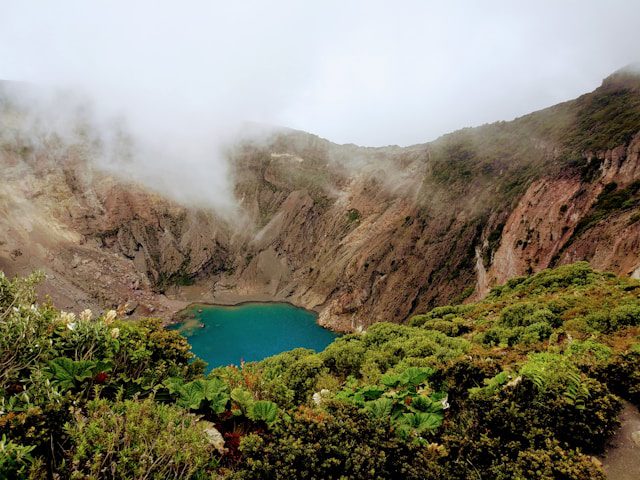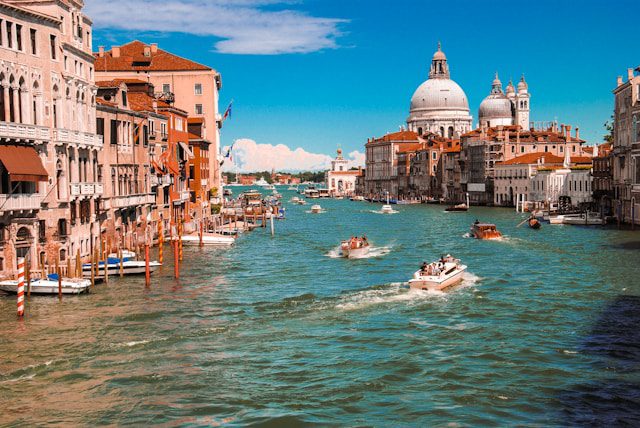It’s not as easy to determine which nations are the warmest on the globe as it might seem. In this post, we’ll showcase the world’s hottest Countries by region.
To determine what is “hottest,” one can use various factors, including the highest recorded temperature, historical highs, average summer temperature, or average annual temperature.
In light of climate change and growing global temperatures, it is imperative to comprehend which countries are the hottest in the globe.
Every region struggles with the effects of industrialisation and human activity, from Asia’s metropolitan heat islands to Africa’s sweltering deserts.
In order to lessen the effects of climate change and guarantee a more just and robust future for everybody, we must acknowledge the difficulties presented by excessive heat and implement sustainable behaviours.
This guide will concentrate on the average annual temperature of countries pf the world, categorized under continents to provide readers with a thorough understanding of steady temperature trends.
Which Continent is the Hottest?
The world’s hottest continent is Africa, which also includes countries that are considered one of the most remote.

Africa, the second-largest and second-most-populous continent on Earth, is also has the world’s hottest countries by region.
The hamlet of Aziziya in Libya was thought to have recorded the world’s highest temperature on September 22, 1913, at a scorching 136.0°F (57.8°C); however, this claim has since been refuted, and Death Valley in California is now thought to be the highest point on Earth.
However, Africa is still the warmest continent, with Mali, holding the record for the highest average temperature on Earth.
Africa, with its very varied climate, faces the challenges of rising temperatures.
It spans the tropical to subarctic regions, with a significant variation in yearly average temperature.
While savanna plains and dense jungle regions can be found in the central and southern areas of the continent, the northern half is primarily made up of deserts.
Dry areas and deserts, like the Sahara and the Danakil Desert, comprise about 60% of Africa’s land area.
Because of these locations’ exceptionally high temperatures, Africa is the hottest continent on Earth.
The largest hot desert in the world, the Sahara Desert, frequently experiences temperatures beyond 100°F (37.78 °C).
Even though Africa is a very hot continent, it has occasionally experienced frigid weather.
The lowest temperature in Africa was recorded on February 11, 1935, in Ifrane, Morocco, at minus 11°F (minus 24°C).
What is the World’s Highest Temperature Ever Recorded?
Death Valley registered its hottest temperature on July 10, 1913, when it rose to 56.7 °C, or 134 °F. Since this was more than a century ago, temperature recording devices were less sophisticated, and some have questioned the accuracy of the data.
Similar worries have also been expressed about Tunisia’s July 1931 temperature reading of 55 °C, or 131 °F, which reflects the intense heat that can be part of the annual mean temperature profile.

Death Valley experienced temperatures as high as 54.4 °C (129.9 °F) on August 16, 2020. If the previous two readings proved to be inaccurate, this would be the highest temperature ever recorded on Earth.
It’s vital to remember that there might be areas of the Sahara, for example, hotter than Death Valley. A climate expert, Daniel Swain, claims these are too far away for trustworthy monitoring.
Due to greenhouse gases produced by people continuing to warm the Earth, more temperature records are predicted to be broken worldwide, not only in Death Valley.
Hottest Countries in Africa
Let’s start with the countries in Africa, among the top continents in terms of climate diversity, and work our way down. The temperatures given here are not are not the highest temperature recorded, but an average of the temperature over a year, utilising both all seasons readings to give an annual average temperature.
1. Mali
Mali, the african nation with the highest average yearly temperature in the world at 83.89 °F (28.83 °C), is home to Songho Dogon hamlet.
Mali, a landlocked country and part of Mali receiving plenty of sunlight because it is situated at the intersection of the Sahara desert and the Sahel region, experiences extreme weather. Mali is among the poorest countries in Africa and faces a serious drought due to the country’s low rainfall.
The Sahel region of Africa is a political, ecoclimatic, and geographical. This region is home to the majority of the world’s hottest nations.
2. Burkina Faso
During the dry season, fishermen leave their canoes where they are, waiting for the waters to come in. A dry lake in the rural municipality of Saaba, not far from Ouagadougou, exemplifying the effects of rising temperatures. Fishermen leave their canoes where they are during the dry season, waiting for the waters to come in.
Mali’s neighbour, Burkina Faso, on the west African coast, is the second-hottest place in Africa. Its average annual temperature is 83.68 °F (28.71 °C). Burkina Faso, mostly located in western Africa, in the Sahel and a small portion in the Sahara desert, is among the ninth hottest countries.
3. Guinea-Bissau
The average annual temperature in Senegal is 83.57 °F (28.65 °C), characteristic of its warm, equatorial climate. Senegal, with both interior and coastal regions, experiences a wide range of temperatures, from moderate along the coast to extreme heat in the interior, measured in degrees Celsius. It is always warmer in the inland regions than by the coast.

4. The Democratic Republic of the Congo
The Democratic Republic of the Congo average annual temperature is 83.08 °F (28.38 °C), a nation in eastern Africa. Given the Red Sea’s extensive shoreline, you might anticipate cooler weather, however, given how hot it is now, that’s not the situation in Djibouti!
5. Mauritania
Mauritania, known for its hot desert climate, often sees maximum temperatures that rank it among the hottest countries. The Sahara desert, known for its desert climate, covers much of the country of Mauritania. The average annual temperature of Mauritania, a country in West Africa, is 83.01 °F (28.34 °C). Its temperature makes sense, given its Saharan location.
6. The Gambia
The jungle nation of Gambia is located in West Africa, Along the Gambia River, temperatures during the hottest day can soar, reflecting the country’s position as one of the world’s tenth hottest countries. It is the hottest country in the world, with an average temperature of 82.35 °F (27.97 °C).
7. Benin
The average temperature of Benin, a country in West Africa, is 81.59 °F (27.55 °C). The Bight of Benin, an unusual stretch of water to the south of the nation, is the source of Benin’s name and lies near some of the hottest cities in the region. Given the high temperatures in Benin, it’s likely that many people are swimming!
8. Ghana
Ghana is the 12th Warmest Places In The World, and it is also in West Africa. Ghana, one of the warmest countries on Earth, is not surprising given its proximity to other hot nations like Benin, Niger, and Togo, making it part of the group of the ten hottest countries. The average annual temperature in Ghana is 80.96 °F (27.20 °C).
9. Guinea
The average annual temperature of Togo, Ghana’s smaller neighbour to the north, is 80.87 °F (27.15 °C), making it a significant west African country in terms of climate conditions. The hot air masses that originate in the Sahara and settle there heat the entire region of West Africa.
10. Niger
The country of Niger is divided into two separate climate zones: the Sahel region in the south and a large arid desert zone in the north. The average temperature in Niger is 27.15 °C (80.87 °F). It’s ironic because its average temperature is the same as Togo’s.
11. Sudan
Sudan’s average annual temperature is 80.42 °F (26.90 °C). The sizable nation has a wide variety of climates, from the tropical region in the southwest to the Sahara desert in the north.
12. Nigeria
Nigeria, a west African nation, is the most populous nation on this list. With more than 200 million people living there, it is one of the most populated and one of the most remote nations in the world. With so many people around, it may not be easy to stay cool in Nigeria, where the average annual temperature is 80.24 °F (26.80 °C).
Hottest Countries in Asia
The greatest continent in terms of geographical area, Asia, is warming more quickly than the rest of the world. According to the World Bank, 39% of global greenhouse gas emissions are attributed to the Asian region, which also consumes 60% of the world’s coal, leading to high temperatures throughout the year in many parts of the region. In light of this, it should be no surprise that the area is experiencing catastrophic weather due to relentless heat waves.

Asia’s heat waves have negatively impacted a variety of fields, most notably agriculture and the general well-being of all living things. The World Meteorological Organisation (WMO) report states that weather, climate, and water-related disasters in Asia directly impacted over 50 million people, claimed over 5,000 lives, and cost over $36 billion in economic losses.
Here are the hottest countries in Africa, ranked by average annual temperature, with many experiencing record highs in 2021.
1. Kuwait
With a mean annual temperature of 27.58 °C, Kuwait is considered as the hotest country in Asia. Administered as the State of Kuwait, Kuwait is a nation situated in the western part of Asia. Since this is a lonely place, the temperature here can get quite hot and stays that way most of the time.
2. Cambodia
The mean annual temperature in Cambodia is 27.25 °C, making it one of the countries with an average year-round temperature that is notably high. Cambodia, the eighth hottest country, is a Southeast Asian country, ranked eighth and well-known for its verdant, low-lying environments. In June and July, the country experiences record highs of 35°C, making it one of the hottest in Asia.
3. Sri Lanka
The average annual temperature of Sri Lanka is 27.24 °C. One of the top ten Asian countries with the warmest temperatures is Sri Lanka, which is situated in the continent’s southern regions. The nation experiences summertime highs of up to 36°C.
4. Thailand
The mean annual temperature of is 26.78 °C. Thailand is a country in Southeast Asia with elaborate temples and ancient ruins. With roughly 69,794,997 inhabitants, it has an extremely hot climate, with the southern isthmus consistently hot.
5. Philippines
The mean Annual Temperature in the Philippines is 26.61 °C. The Philippines, another Southeast Asian nation with stunning beaches and verdant mountain ranges, is located. It is also one of the most disaster-prone nations in the world and its one of the top hot countries in the world, with frequent typhoons, floods, droughts, mudslides, earthquakes, and volcanic eruptions.
6. Saudi Arabia
The average annual temperature of Saudi Arabia is 26.46 °C. The Kingdom of Saudi Arabia, a landlocked transcontinental nation in western Asia and the Middle East, is ranked thirteenth.

Given its landlocked location and abundance of deserts, it is among the warmest areas on the continent.
7. Malaysia
The mean annual temperature of Malaysia is 26.35 °C. Malaysia is a Southeast Asian nation well-known for its beaches and verdant rainforests, but it is also the fourteenth hottest on the continent.
The Even with the warm weather, many foreign visitors choose to spend their vacations in the nation.
Hottest Countries in South America
South America is home to several ancient archaeological sites, tropical rainforests, unique animals, and stunning beaches. It’s a very alluring place with a plethora of travel options.
These are the hottest spots in South America right now, and if you’re planning a trip there, you’ll want to grab your passport as soon as possible. The given temperatures are not the highest ones ever recorded; they represent the average of all seasons’ temperatures over the year.
1. Argentina
At an average annual temperature of 86.38 °F (30.21 °C), Paraguay is the hottest country in South America. The country, which is in the centre of the continent, is quite hot, especially in the summer. The nation’s terrain, encompassing thick woods and wide plains, contributes to its varied climate, from intense summer heat to the rainy season downpours.
2. Brazil
Brazil, renowned for its rich cultural diversity and breathtaking natural beauty, struggles with extreme heat and is among the top countries facing climate challenges. It is one of the hottest countries in South America, with an average annual temperature of 84.05 °F (28.92 °C). The majority of its regions are dominated by a tropical climate, which helps explain the year-round warmth.
3. Bolivia
Bolivia, tucked away in the Andes Mountains, has a variety of climates, including some of the warmest in South America. Bolivia’s low-lying sections and valleys may get quite hot during the summer months due to its average annual temperature of 82.65 °F (28.14 °C), which draws travellers and explorers to its varied landscapes.
4. Suriname
Situated on South America’s northeastern coast, Suriname enjoys a tropical environment marked by elevated temperatures and high humidity. Suriname, one of the world’s hottest countries by region with an average annual temperature of 82.31 °F (27.95 °C), enjoys constant warmth throughout the year, characteristic of its tropical rainforest climate.

5. Guyana
Guyana, which shares borders with Venezuela, Brazil, and Suriname, is close to the equator and hence suffers tropical temperatures. Guyana’s verdant rainforests and savannas, which get an average annual temperature of 81.86 °F (27.70 °C) and are frequently drenched in sunlight and warmth, draw adventurers and nature lovers.
6. Ecuador
Ecuador is one of the hottest countries in South America because it is situated straddling the equator and has year-round warm weather. Ecuador’s diverse landforms, such as the Amazon rainforest and the Andes Mountains, contribute to its generally warm climate, which has an average annual temperature of 80.64 °F (27.03 °C).
7. Colombia
Colombia, renowned for its abundant biodiversity and dynamic culture, faces challenges from elevated temperatures, especially in its lowland areas. However, most of its territory has mild weather, with an average annual temperature of 78.58 °F (25.88 °C). This draws tourists to the country’s breathtaking beaches, deep jungles, and vibrant towns.
Hottest Countries in North America
1. Mexico
Mexico is one of the hottest countries in North America, offering a variety of scenery from tropical beaches to barren deserts. With an average yearly temperature of 77.54 °F (25.3 °C), Mexico is a well-liked travel destination for outdoor enthusiasts and sun worshippers.
2. Belize
Belize, a country on Central America’s east coast, has a tropical climate with consistently mild temperatures. Averaging 79.02 °F (26.12 °C) annually, Palau, experiencing a tropical rainforest climate, witnesses temperature over the past 30 years increasing, a trend observed globally. offers visitors immaculate beaches, verdant rainforests, and colourful coral reefs to explore, the climate maintained from November to April offers the best weather conditions for tourists.
3. Honduras
The Central American nation of Honduras has hot, muggy weather for most of the year. With an average annual temperature of 77.54 °F (25.3 °C), Honduras is renowned for its breathtaking beaches, lush tropical jungles, and prehistoric Mayan ruins.
4. Nicaragua
Nicaragua borders Honduras to the north and Costa Rica to the south, and it experiences high temperatures throughout the year, characteristic of its equatorial location in the northern hemisphere. Its mild climate is characterized by average yearly temperatures of about 77.9 °F (25.5 °C).
Travellers looking for adventure and breathtaking scenery are drawn to the nation’s varied topography, which includes lush woods, clean lakes, and volcanic mountains.
5. Costa Rica
Costa Rica has a tropical environment with moderate temperatures all year round, often measured in degrees Celsius, and it is well-known for its biodiversity and ecotourism options. With an average annual temperature of 77.18 °F (25.1 °C), Costa Rica provides tourists with stunning scenery, such as immaculate beaches, deep rainforests, and towering volcanoes.

Costa Rica, known as the happiest country in the world, also enjoys a tropical climate with temperatures often exceeding 30 degrees Celsius, especially during the hottest months. It resembles heaven. As you wobble down the Arenal Hanging Bridges amid treetops, you’ll face to face with spider monkeys and toucans in an environment with average temperatures hinting at an equatorial climate.
Later, you can relax on the magnificent Carrillo Beach and take in some sun. Visit a functioning coffee plantation to learn about the history of this magical bean, which is well-known across Costa Rica.
6. Jamaica
Jamaica, a Caribbean island, has a tropical environment with sunshine and warm temperatures. Averaging 81.86 °F (27.7 °C) annually, Jamaica’s breathtaking beaches, lively culture, and verdant mountainous landscapes draw travellers.
7. The Bahamas
The Atlantic Ocean archipelago of the Bahamas, which comprises more than 700 islands and cays, has year-round warm, sunny weather. The Bahamas, offering visitors gorgeous white-sand beaches, crystal-clear oceans, and lively coral reefs to explore, maintain an average yearly temperature of 80.6 °F (27 °C), indicative of the global average surface temperature increase.
Hottest Countries in Europe
Europe is home to nations with a range of temperatures and climates, and it is well-known for its varied landscapes, extensive history, and dynamic cultures. While some European countries have mild year-round weather, others, like Spain, claim the title of the hottest country during peak summer months.
Europe provides travellers with a diverse array of climates to experience, ranging from the sunny Mediterranean coast to the inner regions that experience intense summer heat. We shall explore the warmest European nations in this area, where travellers may enjoy pleasant temperatures, stunning beaches, and abundant cultural activities.
1. Spain
Spain has some of the warmest temperatures in Europe due to its Mediterranean climate. Spain has scorching summers, with an average yearly temperature of 64.4 °F (18 °C), particularly in areas like Andalusia and the nation’s interior. Spain, popular for its thriving culture and stunning beaches, is also experiencing rising temperatures, affecting its delectable food production.
2.Greece
Greece, located in southeast Europe, experiences moderate winter temperatures and hot, dry summers due to its Mediterranean climate, grappling with the impacts of extreme weather. It welcomes tourists with breathtaking coastlines, historic buildings, and attractive islands like Santorini and Mykonos. The average yearly temperature is 64.4 °F (18 °C).
3. Italy
Italy, renowned for its extensive art, history, and gastronomy, has had pleasant weather for many years. Italy’s climate varies from region to region, with hotter summers in the south and milder winters in the north.

The country’s average annual temperature is 62.6 °F (17 °C). Italy is a popular destination for tourists who want to see famous sites like the Amalfi Coast, Vatican City, and the Colosseum.
4. Cyprus
The island nation of Cyprus, located in the eastern Mediterranean, experiences hot, dry summers and warm, rainy winters due to its subtropical climate. With an average annual temperature of 71.6 °F (22 °C), Cyprus has stunning beaches, historic sites, and quaint villages for travellers to discover.
5. Portugal
In southwest Europe on the Iberian Peninsula, Portugal has a Mediterranean climate with hot, dry summers and warm, rainy winters. The Algarve region is renowned for its breathtaking beaches and boasts an average yearly temperature of 62.6 °F (17 °C).
Meanwhile, towns such as Lisbon and Porto draw tourists with their lively cultures and extensive histories.
6. Malta
The central Mediterranean archipelago of Malta experiences long, bright days and a hot, dry environment for a large portion of the year. Malta welcomes visitors with an average temperature of 68 °F (20 °C) throughout the year, along with historic landmarks, pristine waters, and a lively local culture.
7. Turkey
Turkey, located at the meeting point of Europe and Asia, experiences a varied climate with hot summers and frigid winters, reflecting the broader trend of extreme weather events depending on the area. Turkey’s southern coast, known as the Turkish Riviera, offers pleasant weather and gorgeous beaches with an average yearly temperature of 59 °F (15 °C).
At the same time, the country’s interior regions are home to fascinating historic towns and breathtaking scenery.
Hottest Countries in Oceania
Known for its breathtaking natural beauty and varied civilizations, Oceania is home to some of the world’s hottest nations. These countries, which range from Australia’s enormous deserts to the tropical islands of the Pacific, endure intense heat all year long.
1. Australia
Australia, the biggest nation in Oceania, is renowned for its striking scenery, varied ecosystems, and notable yearly average temperature. Conditions are hot and dry over most of the continent, especially in the north and centre. In summer, temperatures in cities like Darwin, Sydney, and Perth frequently rise above 30°C (86°F).
Australia is among the hottest nations in Oceania because of the Outback, which has huge stretches of desert and experiences some of the world’s highest temperatures.
2. Papua New Guinea
The tropical climate of Papua New Guinea, which is situated in the southwest Pacific, is marked by high temperatures and humidity. The capital city of Port Moresby frequently has year-round temperatures of 30°C (86°F). The nation’s varied topography—rough mountains, coastal plains, and deep rainforests—contributes to its warm and muggy climate.
3. Solomon Islands
Northeast of Australia, the Solomon Islands archipelago experiences year-round high temperatures in a tropical climate. The capital city of Honiara has year-round average temperatures of about 28°C (82°F), with sporadic highs in the summer.
Travellers seeking pleasant weather and scenic beauty are drawn to the islands’ verdant woods, immaculate beaches, and colourful coral reefs.

4. Vanuatu
The island nation of Vanuatu is situated in the South Pacific Ocean and has a warm, tropical environment perfect for outdoor sports and beach vacations. The capital city of Port Vila experiences year-round average temperatures of about 27°C (81°F), with somewhat warmer summertime highs.
Travellers looking for warmth and adventure frequently visit the nation because of its volcanic scenery, blue waters, cultural diversity, and the temperature of 83.5 in some areas.
5. Fiji
The stunning archipelago of Fiji in the South Pacific has a tropical environment with warm temperatures and humidity. The capital city of Suva experiences year-round temperatures between 23°C and 31°C (73°F and 88°F), with summertime highs.
Beaches surrounded by palm trees, crystal-clear lagoons, and colourful coral reefs make Fiji, with its tropical rainforest climate, a popular vacation spot for swimmers and sun worshippers.
6. Kiribati
The low-lying island nation of Kiribati enjoys year-round warm, humid tropical weather in the central Pacific Ocean. Visitors can experience a tropical paradise on the nation’s atolls and islands, where average temperatures hover around 28°C (82°F). However, rising sea levels and climate change threaten Kiribati’s sustainability and future.
7. Tuvalu
Situated in the South Pacific Ocean, Tuvalu is a tiny, isolated nation with a tropical climate. The capital city of Funafuti has year-round temperatures between 28°C and 32°C (82°F and 90°F), along with considerable humidity, marking it with an average year-round temperature that is quite high.
Travellers looking for cosy and dreamy island escapes are drawn to the country’s coral atolls, immaculate beaches, and abundant marine species.
Frequently Asked Questions
1. What is the Hottest Region in the World?
Furnace Creek in Death Valley, California, USA, is the hottest place on Earth. On July 10, 1913, a temperature of 56.7°C (134°F) was recorded there, showcasing it as a moment of extreme temperature of 83.5 F when adjusted for modern standards. Death Valley experiences daily highs of 45°C (113°F) on average during the summer. The surface heat is far higher than this air temperature.
2. What Are the 10 Hottest Countries in the World?
The top 10 world’s hottest countries by region in the world based on their yearly average temperature and climate conditions includes:

- Mali
- Burkina Faso
- Kiribati
- Djibouti
- Tuvalu
- Senegal
- Mauritania
- Maldives
- Palau
- Benin
3. Which Country Is the Hottest in Africa?
The hottest country in Africa is Mali, with temperatures often soaring above 40°C (104°F) during the hottest months. The majority of the country in West Africa has a hot desert temperature, especially in the north, with some areas reaching maximum temperatures among the highest recorded on the continent.
4. What Are the Top 30 Hottest Countries in the World?
The top 30 warmest countries in the world encompass various regions with extreme temperatures, including those in the Middle East, North Africa, South Asia, and parts of Central America. These countries often experience scorching temperatures due to factors such as proximity to the equator, desert landscapes, and limited rainfall. They include:
- Mali
- Burkina Faso
- Kiribati
- Djibouti
- Tuvalu
- Senegal
- Mauritania
- Maldives
- Palau
- Benin
- Palau
- Sudan
- Senegal
- Mauritania
- Chad
- Montserrat
- Nigeria
- Guinea
- Ghana
- The Gambia
- Mauritania
- The Democratic Republic of the Congo
- American Samoa
- Bahrain
- Niger
- Thailand
- United Arab Emirates
- Yemen
- Sri Lanka
- Suriname
5. How does climate change affect global temperature trends?
Greenhouse gas emissions cover the Earth, trapping heat from the sun and contributing to high temperatures throughout the year globally. Climate change and global warming result from this. More quickly than at any other time in recorded history, the earth is warming today.
Gradual increases in temperature are causing weather patterns to shift and upsetting the natural equilibrium of the environment, making it crucial to monitor average year-round temperatures.
6. What measures can countries take to combat extreme heat and its effects?
- Vernacular building for environmentally friendly cooling
- Low-impact cooling systems
- Geothermal heating and cooling
- Cool roofs programmes
- Reusing plastic to make insulation
Final Words
Each region offers a different combination of heat and topography, ranging from tropical paradises to searing deserts.
It’s clear that some areas continuously endure intense heat all year long, even if identifying the world’s hottest countries by region requires taking into account a number of variables, including historical records, average temperatures, and climatic circumstances.
Understanding the effects of rising global temperatures is more important than ever in light of the impending threat posed by climate change. There is an urgent need to counteract the far-reaching repercussions of climate change, which include more frequent heatwaves and melting ice caps.


